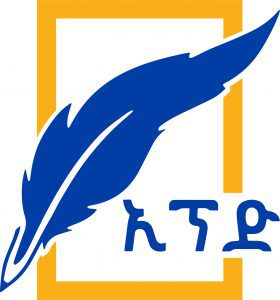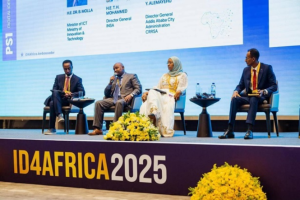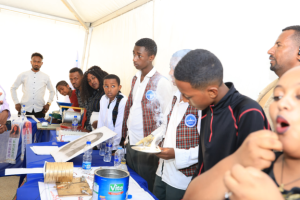
Ethiopia is home to 18 world heritage sites/events inscribed by the United Nations Educational, Scientific, and Cultural Organization (UNESCO). From the total 18 UNESCO-recognized heritages, 12 of them are tangible while the rest six are intangible heritages. And, according to the Ethiopian Heritage Authority (EHA), from the 12 tangible heritage lists, two of them are natural; the other two are natural landscapes, while the rest eight are cultural heritages.
The Ethiopian Heritage Authority (EHA), an authority responsible for heritage research, documentation, conservation, and promotion of Ethiopia’s heritages, is investing its maximum efforts to conserve, preserve, maintain, renovate, and promote the UNESCO-inscribed as well as the national inventory of heritages. Similarly, as the home of a lot of unique and ancient traditions, history, values and heritages, the EHA is extending research activities to include additional heritages both to the national inventory list as well as to UNESCO. According to EHA, extensive research and documentation are underway on natural, cultural, historical, archeological, paleontological, and other heritages to promote them to the national and world heritage list.
With the extensive research and documentation, in addition to the 18 heritages inscribed by UNESCO, currently, there are heritages under UNESCO’s tentative list, awaiting consideration for World Heritage Site status. The Dirre Sheikh Hussein Religious, Cultural and Historical Site, Holqa Sof Omar, Lake Tana Island Monasteries and its Adjacent Wetland, The Cultural Heritage of Yeha, and the Sacred Landscapes of Tigray are among the heritage sites listed on UNESCO’s tentative heritage list. Similarly, additional researches and studies are being conducted on various heritages by the EHA to present them to UNESCO where the EHA believes that compared to the nation’s history, values, traditions, and nature, the number of heritages registered by UNESCO are few.
A week ago, EHA Deputy Director General, Elias Shikur said during a media tour to four UNESCO inscribed sites that EHA’s authority has upgraded to conduct scientific research on heritages, in addition to conserving, documenting, promoting, and undertaking other activities concerning Ethiopian heritages. As to him, following the national reform, the heritage sector gets a new attention and with the new attention, the federal government has conserved and restored more than 30 tangible heritages after conducting research-based assessments.
Parallel to that, with the extensive research and documentation, Ethiopia has managed to add five additional heritages to UNESCO’s world heritage list during the past two years only. Similarly, through intensifying heritage diplomacy and identifying Ethiopia’s looted heritages from their country of origin into other countries by different means, the nation has restored more than 40 heritages during the past seven reform years, according to Elias. The national effort targets to conserve and preserve the nation’s heritage and to boost the economic gains from the heritage industry.
Extending research-based heritage conservation and restoration
While investing in extensive heritage conservation and restoration during the past seven reform years during the process of conservation and restoration, Ethiopia gives due attention to applying scientific methods, to follow necessary procedures and standards, according to the authority. During his recent interview with ETV, EHA’s Director General, Assistant Professor Abebaw Ayalew said that Ethiopia follows research-based scientific methods, UNESCO heritage conservation and restoration procedures, as well as national heritage conservation and restoration guidelines, while restoring more than 30 heritages during the past seven years.
The national and UNESCO guidelines for heritage conservation and restoration prioritize the long-term preservation of cultural and natural heritages through comprehensive planning and by integrating into the community life through deep and scientific research. The already prepared national and international guidelines emphasize the importance of balancing preservation with sustainable development, including sustainable tourism.
As heritage conservation and restoration are crucial to safeguard cultural heritages as well as historical legacy, it requires a multidisciplinary approach with strict ethical principles and a commitment to preserving the authenticity and historical integrity of the assets of the heritages, according to UNESCO. And, according to the head of EHA, Ethiopia is strictly following the national as well as international (UNESCO) heritage conservation and restoration guidelines, and the whole process of conservation and restoration task is applied to the guidelines.
For his part, Architectural and Heritage Consultant, Tadesse Girmay, said that heritage conservation and restoration is a multidisciplinary approach that follows strict guidelines and research-based approaches. As to him, conservation and restoration of heritages need serious attention to protect the original and historical assets of the heritage as well as to ensure the preservation of the heritage for the next generation. As a result, the conservation and restoration of heritage focus mainly on maintaining the historical accuracy and authenticity of sites and objects.
On the way to introduce the heritage digital inventory
According to Abebaw, EHA’s Director General, the authority is working on modernizing the heritage documentation and inventory system by introducing digitalization into the sector. For Abebaw, a lot of heritages are listed in the national heritage inventory, and 18 heritages are under UNESCO’s world heritage list.
To promote these and other heritages, the Ethiopian Heritage Authority in collaboration with the Information Network Security Administration (INSA) is developing a software application to fully digitize the heritage inventory system, he added. “Currently, the authority is working on developing the heritage inventory system into a digital system,” Abebaw said, adding that applying a digital inventory system helps to make the heritages easily accessible online and to promote the heritages and attract visitors.
“In collaboration with INSA, software development is already on its final step,” Abebaw said. As to him, the digital heritage application will be an easy and accessible app that will include the number of UNESCO-registered Ethiopian heritages, the nationally registered heritages and the natural, unique features, and other necessary information about the heritages.
According to Abebaw, a national inventory is a must for UNESCO member countries. And as to him, it is important to make the national heritage inventory system modern and easily accessible to meet the current world’s development level. As a result, Ethiopia is working to introduce digital heritage inventory system, to be implemented soon. The digital inventory system is crucial for the conservation, restoration, and promotion of the heritage.
The digital heritage inventory system will open a new chapter in Ethiopia’s heritage inventory and documentation system.
BY DARGIE KAHSAY
THE ETHIOPIAN HERALD FRIDAY 25 APRIL 2025





